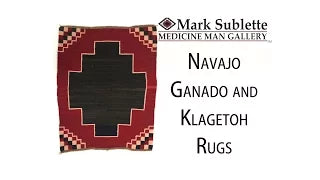Ganado
When many people think of a Navajo rug, they picture a Ganado rug. The popularity of the Ganado Navajo rug is due in part to Juan Lorenzo Hubbell, an important early trader who owned several trading posts on the Navajo reservation and a warehouse in the Arizona railroad town of Winslow. His home and operations were based at the Hubbell Trading Post (founded 1878) near Ganado, Arizona, around 50 miles south of Canyon de Chelly. Hubbell admired early Navajo blankets from the Classic Navajo period (1700-1865) and encouraged weavers in the area to model their rugs after these designs, using paintings of patterns he favored as a guide. Hubbell was partial to red, black, white, and natural grey wools and often asked weavers to use black yarn in place of the indigo blues seen in the original Classic Period blankets. The rugs were so close to these early mantas and serapes that they were termed Hubbell Revival Rugs. By the 1930s, weavers in the Ganado area moved away from the Hubbell Revival style rugs. The newer rugs featured a large motif in the rug’s center combined with a complex geometric double or triple border of lozenge or diamond shapes. These Navajo rugs were so unique and appealing that they became known as the Ganado regional style. (Hubbell also owned a trading post near Klagetoh, Arizona, which developed its own unique weaving style.)
